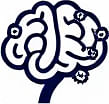The Inversion Technique: A Key Mental Model for Better Decision-Making
 by Max Miller
by Max Miller
The Inversion Technique flips traditional thinking by focusing on what to avoid rather than what to pursue. This approach aids in psychology, business, and cognitive growth, offering practical ways to enhance problem-solving and strategic planning. Discover its applications and benefits here.

The Inversion Technique stands as a fundamental mental model that encourages viewing problems from an opposite angle. By concentrating on potential failures and obstacles, individuals can uncover hidden risks and improve outcomes in various fields.
This technique involves reversing goals to identify what could go wrong. For instance, instead of planning how to succeed in a project, one might ask what factors could lead to failure. Inversion Technique proves especially useful in areas like psychology, where it helps examine negative behaviors.
In psychology, this method allows people to explore emotional pitfalls. Consider someone aiming to build better habits; they might first list habits that derail progress. This reversal highlights patterns that often escape notice, leading to more effective self-improvement strategies.
Business offers another strong area for application. Leaders use mental models like this to anticipate market shifts. A company might analyze what would cause a product to fail, such as poor customer feedback or supply issues. By doing so, they create contingency plans that strengthen overall operations.
Cognitive development benefits greatly from such approaches. Children and adults alike can enhance their thinking skills by practicing reversal exercises. For example, in education, students might consider what prevents learning, like distractions or unclear instructions. This process fosters deeper reflection and better retention of information.
Why This Technique Works
At its core, the method draws from simple principles of logic and foresight. It shifts focus from optimism to caution, balancing perspectives in decision-making. One key advantage is that it reveals assumptions that might otherwise remain unchecked.
Take historical figures who employed similar strategies; their successes often stemmed from considering worst-case scenarios. This practice aligns with cognitive theories that emphasize proactive thinking, helping individuals avoid common errors.
In practical terms, applying the technique starts with clear goal-setting. Begin by stating the desired outcome, then invert it to explore barriers. For instance, if the goal is financial stability, one might list ways to incur debt or lose income. Decision-making improves as a result, making plans more resilient.
Real-World Examples
Consider a startup founder launching a new app. Instead of only envisioning user adoption, they use inversion to think about what might drive users away, such as bugs or unappealing design. Addressing these issues early prevents costly mistakes and boosts success rates.
In personal life, someone seeking better health might invert their fitness goals. They could examine what leads to inactivity, like unhealthy eating or lack of motivation. By tackling these factors, they pave the way for sustainable changes.
This approach extends to team dynamics as well. In group settings, inverting problems encourages collaborative problem-solving. Teams might discuss what could fracture unity, such as miscommunication, and then implement safeguards.
Steps to Implement the Technique
To get started, follow these basic steps:
- Define your primary objective clearly.
- Reverse the objective to identify potential failures.
- Analyze the reversed elements and develop countermeasures.
- Test the revised plan in small ways before full implementation.
For beginners, practicing with everyday decisions can build familiarity. Over time, this habit sharpens cognitive development and leads to wiser choices in complex situations.
One challenge is overcoming natural biases that favor positive thinking. However, with consistent use, the technique becomes second nature, enhancing overall effectiveness.
Final Thoughts
Incorporating the Inversion Technique into daily routines offers lasting value. It provides a straightforward yet powerful tool for refining strategies in psychology, business, and beyond. By regularly applying this mental model, individuals foster growth and achieve more reliable results, turning potential pitfalls into pathways for success.
